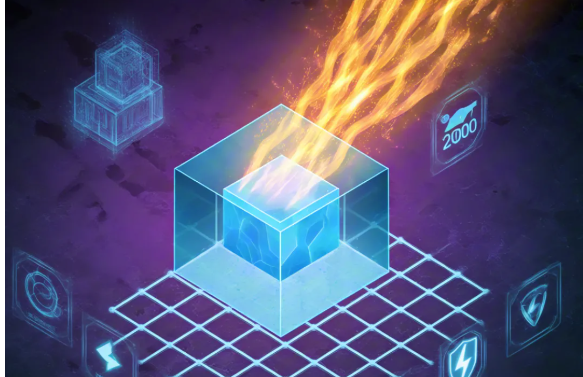Pos:
Home KnowledgeTechnologyCorrosion-Resistant: Boron-Doped Single-Crystal Diamond Redefines High-Temperature Industrial ApplicationsExtreme environments are the touchstone of industry. Confronted with industrial bottlenecks posed by high temperatures, high pressures, and strong corrosion, the limitations of traditional heaters are fully exposed. However, an innovation rooted in the very nature of diamond—boron-doped single-crystal diamond—is subverting the old order of high-temperature applications with its unparalleled robustness and stability.
Pure diamond is an insulator, but the ingenious introduction of boron atoms endows it with an amazing "dual identity":
Ultimate temperature-resistant barrier: It breaks the limits of traditional materials. Experiments have confirmed that its structure remains stable at an ultra-high temperature of 2000°C, far exceeding the graphitization threshold of ordinary diamond (approximately 1400°C).

Electrical conductivity: Its adjustable conductivity range spans 100,000 times (from 10⁻² to 10³ S/cm), enabling free switching from semiconductor to metal-like properties, which precisely meets the requirements of different heating powers. The resistance change in the high-temperature region is minimal (±0.05%/°C), and its temperature control accuracy is far superior to that of traditional materials such as platinum.
Corrosion resistance: When exposed to strong corrosive media such as boiling concentrated sulfuric acid, hydrochloric acid, and hydrofluoric acid, its corrosion rate is as low as the order of 10⁻⁹ g/(cm²·h). This represents a thousandfold improvement in corrosion resistance compared to refractory materials like silicon carbide, making it impervious to harsh chemical environments.
The magnificent transformation of Boron-Doped Diamond (BDD) from laboratory achievements to industrial-grade products relies on the maturity of three pillar technologies:
Repeatable Growth: Advanced deposition solutions (optimized Microwave Plasma Chemical Vapor Deposition/MPCVD, hot-wire assisted MPCVD, etc.) ensure high uniformity of large-area BDD films (thickness deviation < 5%) and precise control of doping concentration, laying the foundation for mass production.
Robust Configuration: Innovative electrode layouts (optimized spiral/serpentine designs) achieve a temperature uniformity of ±3°C and enable heating from room temperature to 1000°C in 15 seconds. The selection of high-performance substrates (sapphire/zirconia) combined with interface enhancement (e.g., Ti layers) ensures the structural integrity of the device even under high-temperature conditions.
Ultimate Packaging: The "gradient welding" technology (Ti ohmic contact/Pt barrier layer/W connection) has been verified through 100 thermal cycles at 1800°C, with a contact resistance change of < 5%. Highly adaptable leads (e.g., Nb-based alloys) and ultra-sealed packaging (leak rate < 10⁻¹⁰ Pa·m³/s) guarantee stable and durable connections in extreme environments.
The improvement of these three core technologies has paved the way for BDD heaters to enter the trillion-scale high-temperature industrial application market.
Aerospace: BDD array heaters have successfully simulated aerothermal environments at 1500–2500°C with a temperature control accuracy of ±2°C, providing key data for the evaluation of next-generation thermal protection materials. Compared with traditional arc heating, their energy efficiency is doubled and costs are significantly reduced.
Energy Technology: In the field of solar thermal power generation, BDD heaters have conducted long-term (1000-hour) stability monitoring of molten salts at 1000–1500°C, accurately capturing the decomposition critical point (1105°C) and ensuring the safety of heat storage systems.
Cutting-Edge Scientific Research: The combined technology of BDD and lasers has reached the ultra-high temperature limit of 3000°C+, supporting cutting-edge material science research such as metallic hydrogen synthesis.
High-End Chemical Industry: In high-temperature reactions, catalysis, and nuclear waste treatment involving corrosive media (e.g., strong acids, strong alkalis, halogens), BDD heaters have become irreplaceable core components due to their unparalleled corrosion resistance.
Materials Science: They provide an extremely stable and pollution-free thermal environment for superhard material synthesis, high-temperature phase transition research, and advanced ceramic sintering.
Semiconductor Manufacturing: Exploration is underway regarding their application potential in ultra-high-temperature process steps.
This ultra-high-temperature revolution led by BDD is reshaping the future of industrial high-temperature applications with the ultimate performance of diamond.
The boron-doped single-crystal diamond produced by CSMH can achieve doping from low concentration to high concentration. It has realized a uniform and controllable concentration and a customizable boron doping process.CSMH uses the MPCVD method to prepare large-sized and high-quality diamonds,and currently has mature products such as diamond heat sinks, diamond wafers, diamond windows,diamond hetero junction integrated composite substrates,etc.
 闽ICP备2021005558号-1
闽ICP备2021005558号-1Leave A Message